7 Creepiest Facts I Wrote into my Paris Catacombs Thriller
Under the Surface was inspired by true events. Here's how the creepiest real-life facts made their way into the plot!
Under the Surface is a survival thriller I wrote about an aspiring travel YouTuber, Ruby, who goes on a class trip to Paris and can’t wait to spend the week with the boy she’s falling for, Sean. But when her best friend sneaks out to meet a hot French boy, Ruby goes after her, and he takes them into the catacombs for a secret party and they get lost for days, while aboveground Sean races to find her and a media frenzy begins.
And it’s inspired by true events.
The coolest thing about writing a story set in the catacombs was getting to visit them several times and meet actual cataphiles—the urban explorers who traverse the off-limits sections of the tunnels. I learned tons of creepy facts from them and all my research rabbit holes, so I thought it’d be fun to show you how some of these nuggets influenced the story, and how I weaved them in to make the catacombs feel like a character itself.
Be warned: there are spoilers below!
Fact #1: When in Paris, there’s a city’s worth of bones under your feet
When people think of the Paris catacombs, they might imagine the tourist section where you descend 131 steps and follow some winding corridors to an ossuary—The Empire of Death— where you can view halls lined with human bones arranged in artistic patterns.
But this ossuary is only a small part of the vast network of 300 km of underground tunnels that span much of the city, home to over six million dead Parisians. Most of it’s illegal to enter because it’s so dangerous—there are cave-ins, flooded tunnels, and the constant threat of getting lost if you’re not with an experienced guide.
In Under the Surface, Ruby gets lost in those off-limits sections. And when she first meets Julien, the alluring Parisian boy who invites her and her friends to a secret underground party, I had to explain what the catacombs were without it feeling like an info-dump. So I combined facts, voicey introspection, and fun dialogue:
“We’ve been dying to see the catacombs—the intricate web of tunnels beneath the city where the skeletal remains of six million long-dead Parisians line miles and miles of passageways in artistic arrangements. It has to be one of the creepiest things you can see on the entire planet, which obviously means I have to see it. Mr. LeBrecque added it to our itinerary after I begged and pleaded, but we’d be visiting the small touristy section—the only bit open to the public. Most of the other entrances scattered throughout Paris have been sealed for ages, and the only accessible ones are secret from everyone except for—
“You’re a cataphile, aren’t you?” I ask Julien, breathless. Suddenly his outfit makes sense.
Selena sputters a laugh. “Did you just call him a pedophile?”
“A cataphile,” Olivia pipes up. “It’s what they call the explorers who meet up in the catacombs.” Of course she’d know about them, too. “Illegally, I might add. Isn’t it dangerous down there?”
“How’s it dangerous?” Selena asks.
“It’s not if you know what you’re doing,” says Julien, “and where you’re going. And I do.”
Fact #2: Thieves used to pose as tour guides
When I first toured the catacombs in 2015, our guide shared how in the 1800s, thieves would pose as tour guides to lure people deep into the catacombs, then rob them and leave them to find their way out of the pitch-black tunnels alone. If their victims were lucky, the thief would let them keep a lamp.
That’s why there’s now a thick black line painted along the ceiling of the official tour route, so if anyone ever found themselves lost without a map or guide, they could follow the line to the exit… if they could see it. They called it the “lifeline” because it was your chance to escape alive.
Sean sees this lifeline while touring the catacombs with his class, as their teacher tries to keep the students occupied while the French police search for the missing girls. This excerpt is from Sean’s POV, and Guillaume is their tour guide.
“Did anyone notice this black line?” Guillaume asks.
I’d vaguely noticed it winding through our route along the scabrous ceiling, reminding me of the red brick Freedom Trail back in Boston, so I absentmindedly raise my hand.
Always a mistake.
He calls on me. “Do you know what it’s for?”
“Uh . . .” I stiffen, hating getting put on the spot. “Is it . . . so people don’t get lost?”
“Very good,” he says. I relax my posture. “It’s called the lifeline. When the catacombs first opened to the public in the eighteen hundreds, none of these lights were installed yet, and you could easily take a wrong turn into an enormous, pitch- black maze. Back then, grifters would bring people down here and threaten to leave them to find their way out alone . . . unless they paid a price.” He rubs his fingers together, eyes glinting.
This anecdote was the original inspiration for Under the Surface. It’d be terrifying to get lost in that dark maze with only one flashlight, the battery like a ticking timer. What a story that would make! What if a group of teens got lost down there? What if one of the girls was in love with a boy aboveground who had no idea where she went? So the idea was born.
(Fortunately, my own tour guide was not a thief.)
Fact #3: Teenagers got lost in the catacombs in 2017
As Ruby and Sean solidified in my mind over the next couple of years, I researched more about the cataphiles (more on them below) and watched YouTubers share firsthand accounts of exploring the dark maze—and apparently, some thieves still pose as tour guides today. Spoiler: Though Julien isn’t a thief, this concept planted the seed that he’s up to more funny business than what he’s telling the girls.
Then in June 2017, I saw a news story on CNN about teenagers who were rescued from the Paris catacombs after being lost for three days.
This story didn’t gain much traction, and if you try to research it, you won’t find much. I never attempted to reach out to the parties involved. I’m sure their experience was quite harrowing, and I hope they made a full recovery in peace. But seeing this brief snippet validated that my premise was realistic, even today.
Fact #4: Cataphiles explore the off-limits sections
Cataphiles don’t just wander around the maze of tunnels—they have parties and raves, graffiti the stone walls, swim in the underground lakes, and find hidden alcoves no one’s set foot in in hundreds of years. As Julien says:
“Coming down here . . . it’s like a drug. An addiction. The rush of exploring the unknown, of finding rooms nobody has entered in centuries—there’s nothing else like it.”
I wove these activities into the book in various ways: the party Julien meant to take the girls to before they get lost, the graffiti Ruby inspects (some of which hold clues), the underground lake where they must hold their breath for over a minute to swim across.
The cataphiles also abide by a code to respect the sacred halls they wander, including doctrines like “what comes down must go up.”
“Watch it.” Julien points at the plastic seal she accidentally dropped. “What comes down must go up.”
“Sorry, sorry.” She [Olivia] picks it up, harried, not used to getting things wrong.
“These are sacred halls. Let’s not disrespect the dead by leaving our trash down here with them.”
The dead. I peer down the corridor. They’re down here somewhere.
Cataphiles also play music as they explore so fellow cataphiles can hear them coming and know they’re friendly. And in the book, music—or the lack thereof—is a clue that whoever is chasing Ruby, Julien, and their group are not actually cataphiles, but someone much more sinister…
Fact #5: Cataphiles are actually… not so creepy
The police play cat-and-mouse with illegal explorers, sealing the entrances throughout Paris to limit access to old mines: manhole covers, old doors in the Metro tunnels, trapdoors in old basements, and so forth. But according to one of my cataphile guides, the police mostly want to keep tourists away—not the cataphiles. In fact, it’s helpful that they go down there, since they know the layout best and help monitor its structural integrity. During this very tour, our guide noticed a crack in the ceiling and paused her spiel to inspect and photograph it so she could report it, with lots of unnerving muttering about how “that wasn’t like that last week.”
The cataphiles also help keep tourists from getting lost. All those rumors you hear about cataphiles grabbing your maps and running away? Maybe that happens. But if they’re a real cataphile, they’ll come back to lead you to the surface. They only freak out intruders to dissuade them from coming back, for their own safety.
Still, those creepy rumors were great inspiration for the sinister presence that chases Ruby and company—and that whole structural integrity bit helped inspire their motivation. But as a nod to the truth, Sean notes how the cataphiles help the rescue operation… and I think they would in real life, too.
Fact #6: How they got all those bones down there
The catacombs weren’t always underground ossuaries, but limestone quarries dating back to the late 13th century. Miners would extract the stone from enormous well shafts—stone that’s thought to have been used in some of Paris’s most famous buildings, including Notre Dame and the Louvre palace.
The mines were largely forgotten about until the late 1700s when streets of Paris started collapsing into the old tunnels. Literally. On December 17, 1774, an entire city street fell into a 20-meter deep hole known as the “Mouth of Hell.” This incident triggered an inspection and fortification project of the old mines.
Around the same time, the cemeteries couldn’t keep up with the rising death toll in Paris, so bodies were buried in mass graves. During a particularly bad storm, the graves started flooding into neighboring shops’ basements. LITERALLY. CORPSES AND ALL. It created such a critical public health hazard, city officials decided to relocate the bones. Since it was too expensive to shuttle them all outside the city, they decided to drop them into the old mines.
AGAIN. LITERALLY. They dropped the bones down the same wells miners previously used to extract limestone.
Underground, the workers fortifying the tunnels collected the bones and organized them into ossuaries, using their usual construction methods: small bones piled in the back, bigger pieces like femurs and skulls up front. They took pride in their work, creating intricate patterns—stacks and zigzags, crosses and hearts—that Ruby’s group often runs across while outrunning the sinister presence chasing them.
Not all of this made it into the book—I had to choose which nuggets would be most relevant to the plot—but Olivia does explain some of it when they come across a creepy mural showing Paris crumbling.
“Paris did actually split open like this once.”
“Yeah, right,” says Val.
“No, it’s true,” says Olivia. “A mile-long trench opened up one afternoon—December 1774, I think—and all the houses on that stretch collapsed into it. They called it the Mouth of Hell.”
“But if there are no fault lines . . .” I trail off.
“It wasn’t an earthquake. It was actually because of this place. The catacombs.” She tilts her head. “Only, they weren’t catacombs yet. They were originally mines. They took a ton of limestone from down here to build the city, even buildings like Notre Dame, but they didn’t properly fortify these tunnels afterward. So buildings started collapsing into them.”
“It wasn’t until they started moving the dead into the tunnels that the city stabilized,” says Julien.
“Yeah, that’s around when they started bringing down all these bones.” Olivia motions to the column. “The fortification work reminded them Oh, hey, there’s all this empty space right under our feet; perfect place to dump the bodies from the overflowing cemeteries.”
Fact #7: Julien’s favorite crepe stand actually exists
Okay, so this one will only make sense if you’ve read the book… and for those who have, it’s more heart-wrenching than creepy. In one scene, Ruby asks Julien what’s his favorite spot in Paris.
He grins. “Oh, easy. There’s this little crepe stand right beside Notre Dame. I get one with strawberries and Nutella, so warm and gooey, the edges so crisp, ugh, it is perfection.” He clasps his stomach. My mouth would water any other time, but after breathing in stale air that reeks of damp dust for hours, it feels dry and gritty. “I like to sit on a bench right there with that magnificent view, early in the morning, when the sky is clear and it is not so busy. There is no better place, not in Paris, not in the world.”
“I love that,” Val says, but I scoff.
Julien peers at me again. “What?”
My cheeks warm. His answer reminds me so much of what Tyler told me about Paris that night in his bedroom. “It’s just—That sounds so cliché. So touristy.”
He gives me a little shove. “Look at you, judging me.” The corners of his eyes crinkle. “Locals can enjoy what the tourists do. That’s how it becomes a tourist attraction to begin with, yes? The most appealing spots become the most popular.” Julien brandishes his arms. “And up until yesterday, this was my favorite spot.”
“Sorry we ruined the death maze for you,” Selena mutters, heaving a sigh. “We’re never going to find a way out, are we?”
So the next time you head to Paris, look for one of these crepe stands around the perimeter of Notre Dame’s courtyard. And get one for yourself. For Ruby. And for Julien. (By the way, if you want more of an explanation about Julien’s fate, you can find it in my latest author AMA.)
But all facts aren’t present in fiction…
As much as I tried to incorporate historical and present-day accuracies into the book, I also took many artistic liberties, including the [redacted] who chase Ruby and company through the catacombs, as well as the layout of the corridors they traverse. Because this route doesn’t exist, I commissioned a map artist, Danny Ride, to bring this vision of the catacombs to life. This map appears in the book itself—both the hardcover and paperback!
I hope you enjoyed learning a bit more behind the story of Under the Surface! If you have any questions—either about the catacombs or what you’d like to see in an upcoming newsletter—let me know in the comments below. 🥰
P.S. All photo credits go to ME (lmao) except for that CNN screenshot.


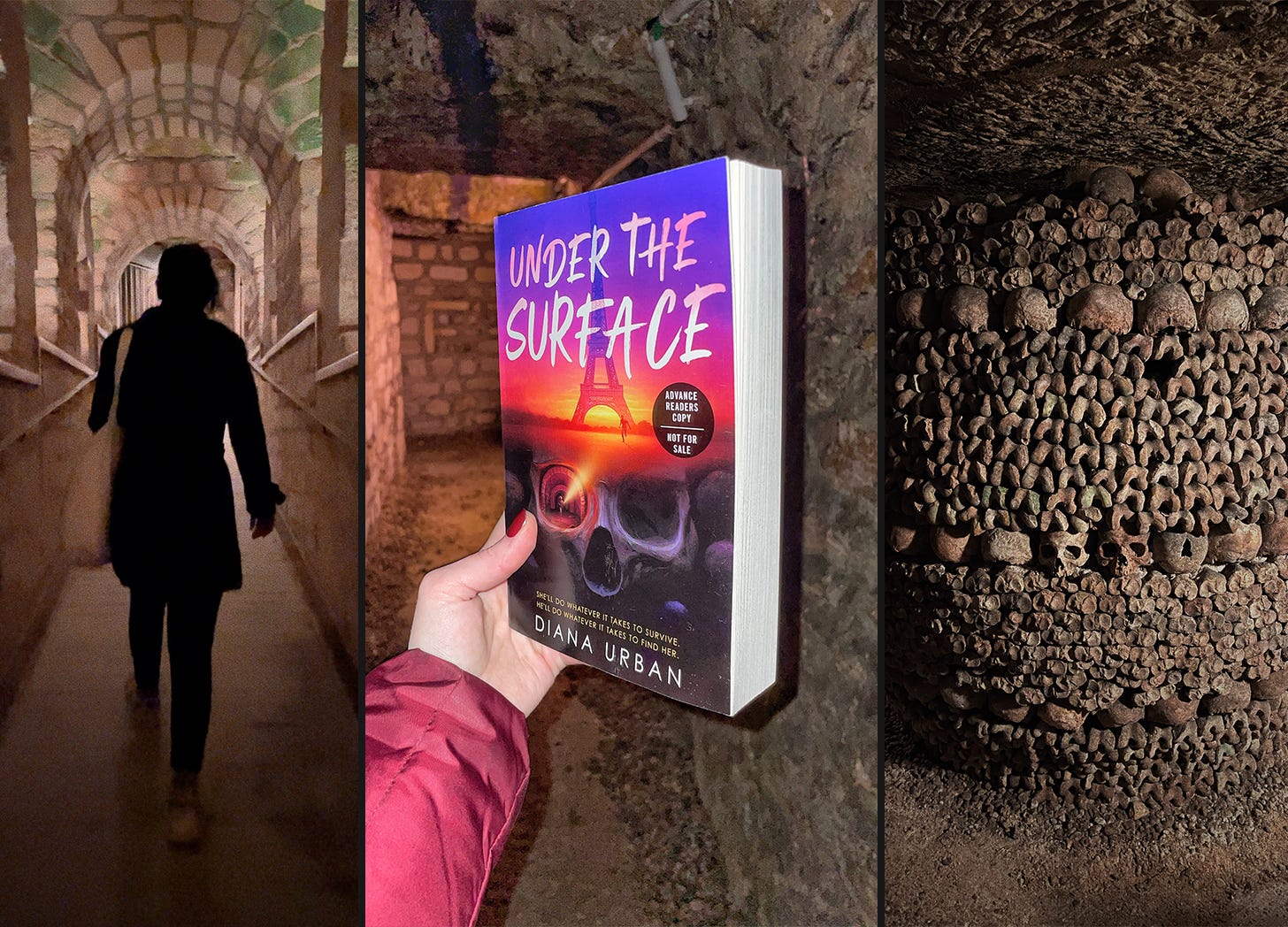
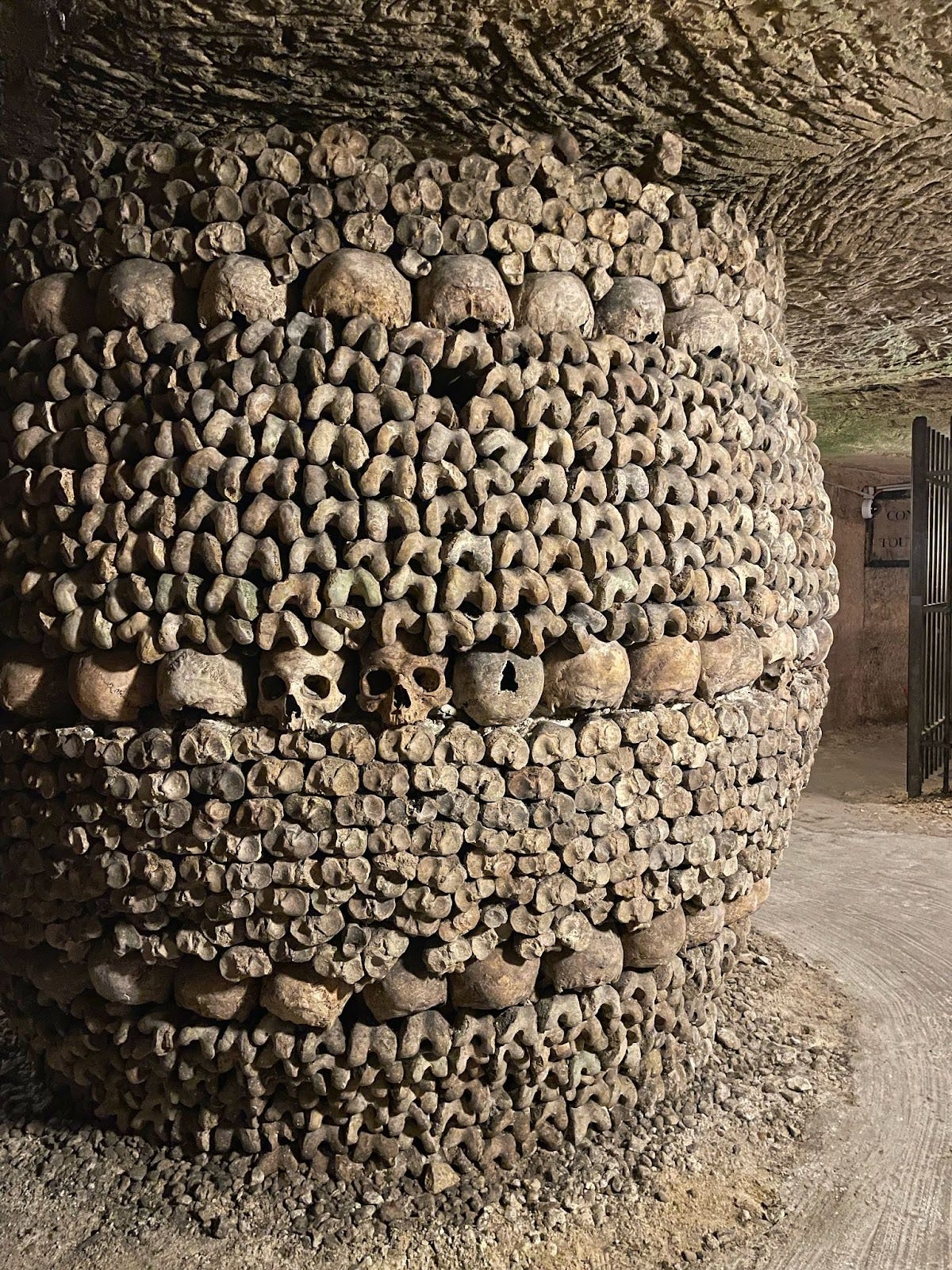
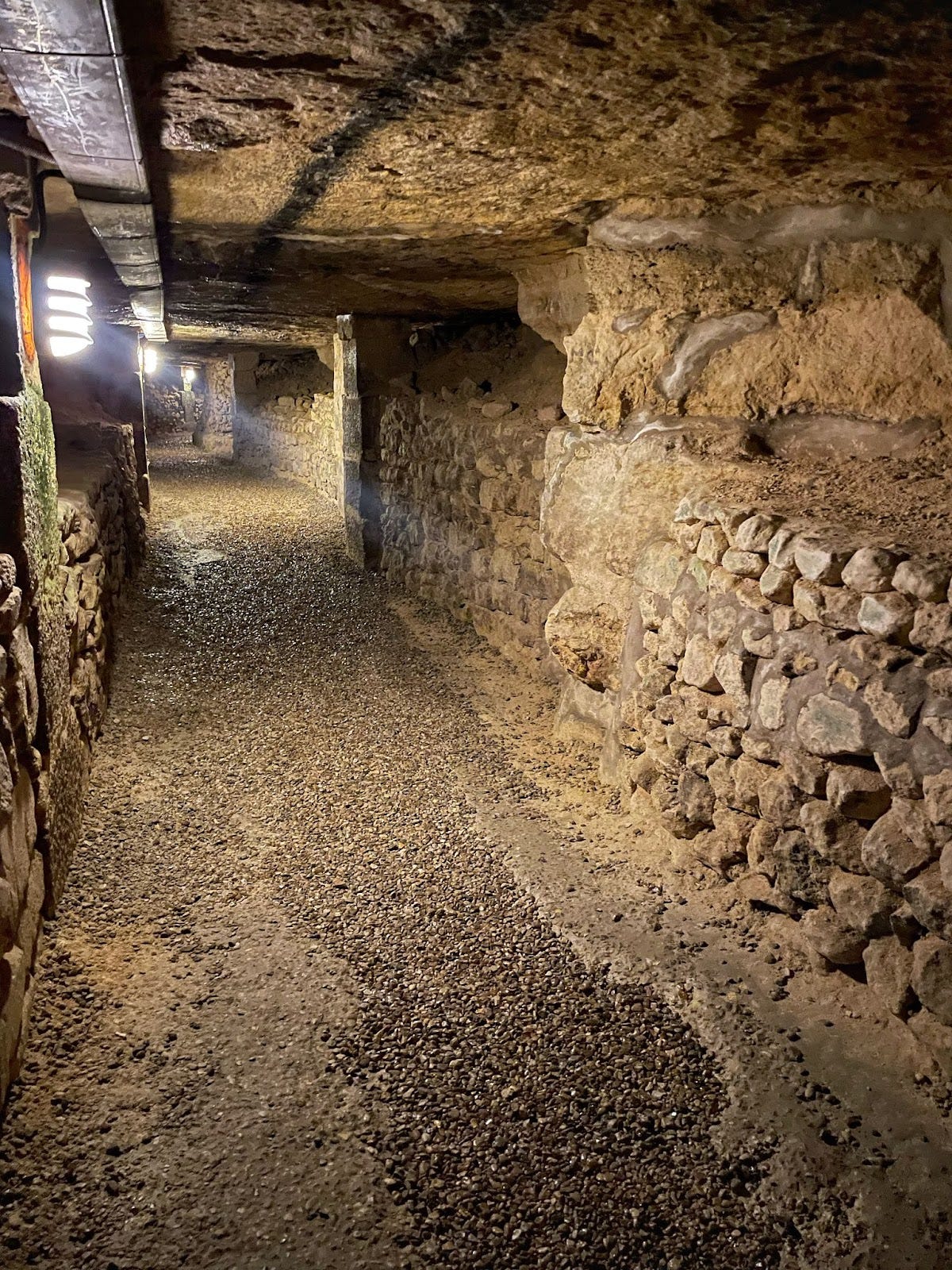
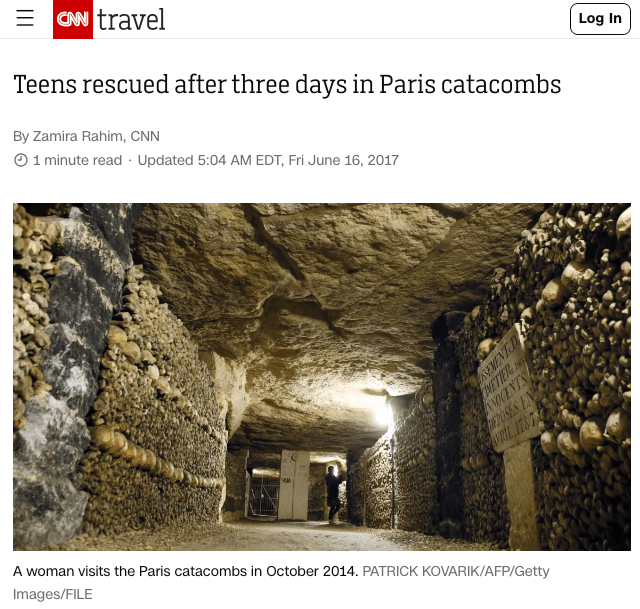
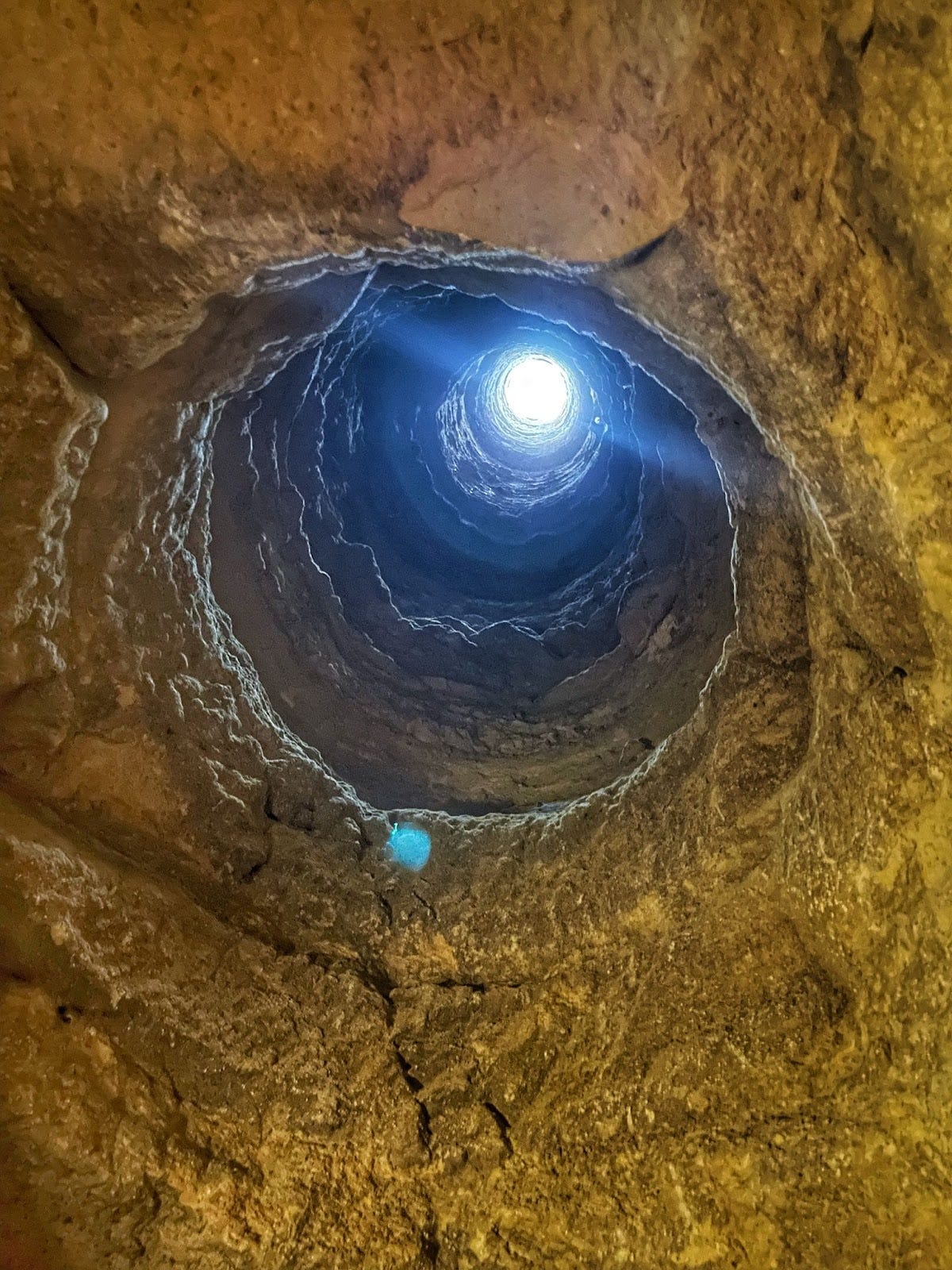
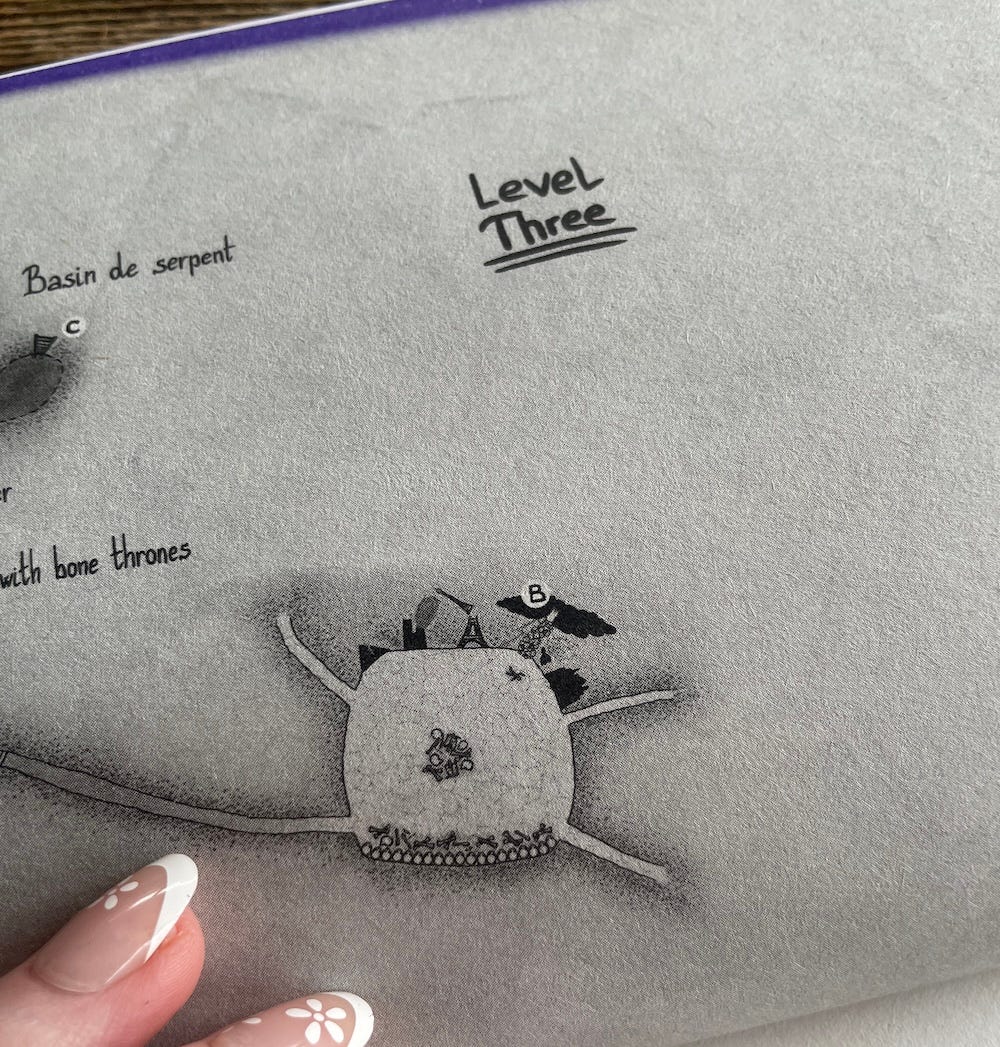
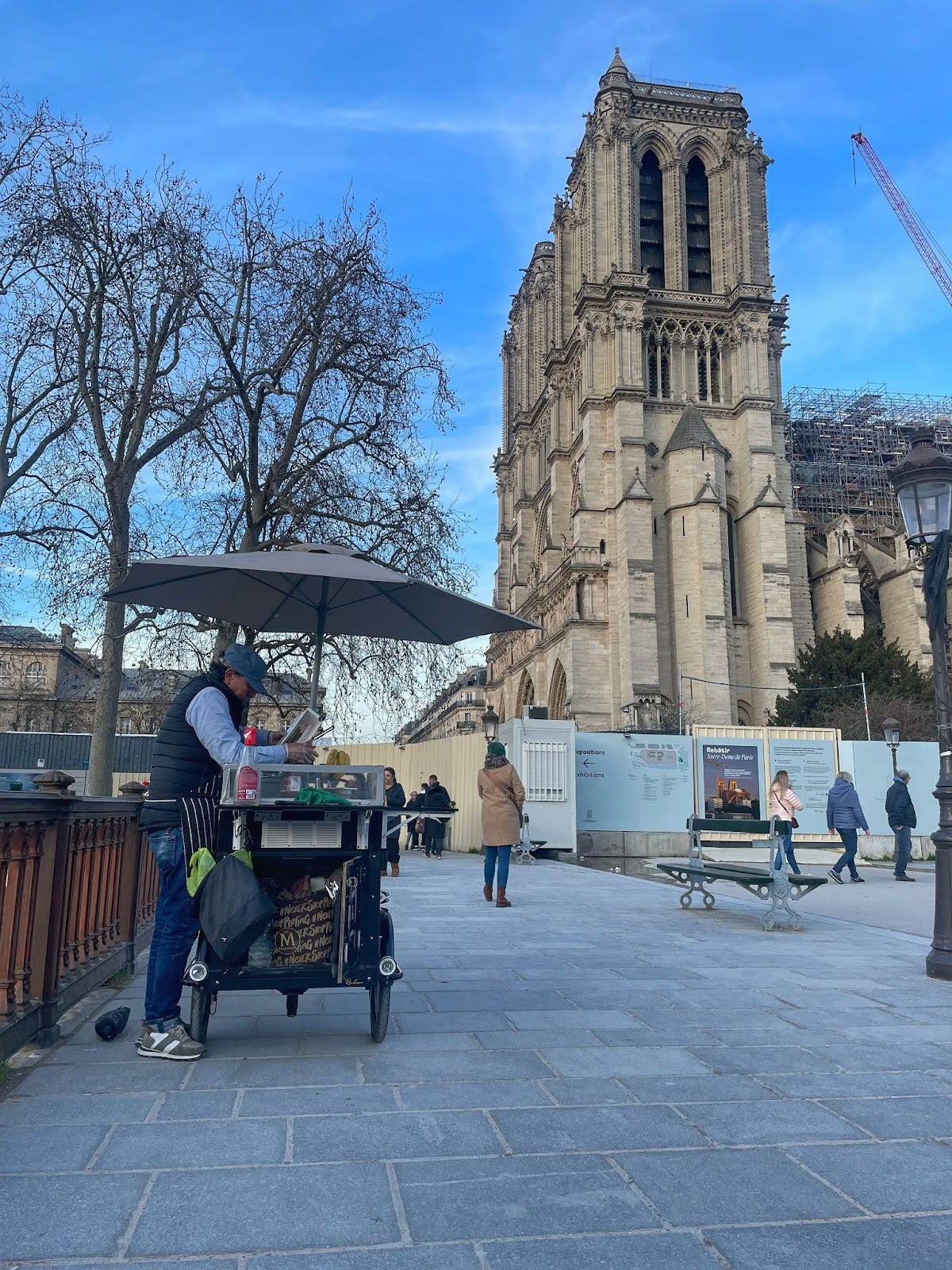
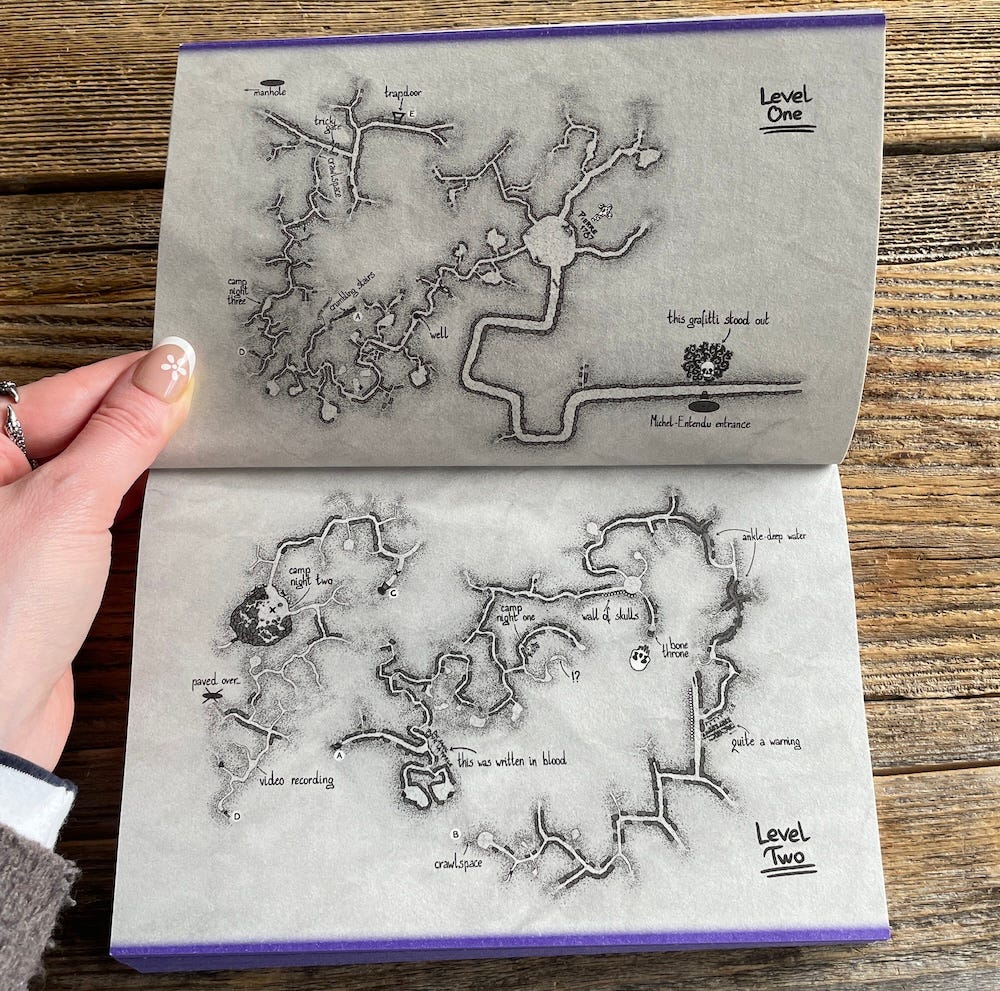

Cool. Now you can run a contest online, asking readers to name more creepy facts and the winners get a digital copy of the book. Stir the pot! Engage the readers! Good luck!